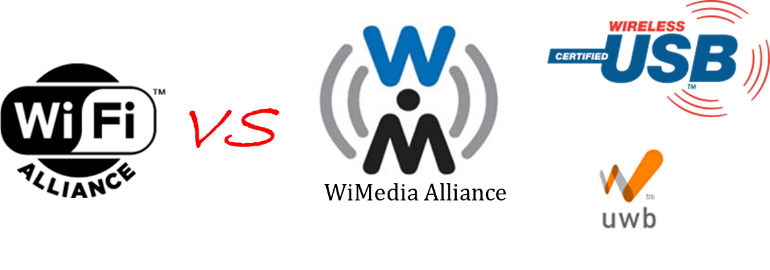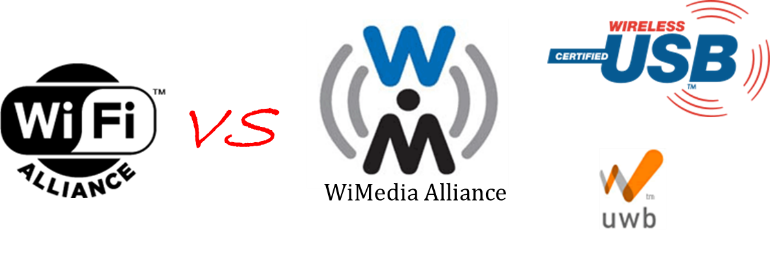Over-engineered to perfection, outmaneuvered by Wi-Fi
In Part 1 of this series, we recounted the birth of wideband radio at the turn of the 20th century, and how superheterodyne radio killed wideband radios for messaging after 1920. But RADAR kept wideband research alive through World War 2 and the Cold War. Indeed, the story of wideband radios was not over…

Continuing the story, the benefits of ultra-wideband (UWB) became more apparent as demand for wireless communications grew in the 1990’s. But commercial deployment of UWB systems required worldwide agreement on frequency allocations, harmonic and power restrictions, etc. As interest in the commercialization of UWB increased, developers of UWB systems began pressuring the FCC to approve it for commercial use. In 2002 the Federal Communication Commission (FCC) finally allowed the unlicensed use of UWB systems. The European Telecommunications Standards Institute (ETSI) followed a few years later with their own regulations, unfortunately slightly different than the FCC regulation. Other regions followed, often aligning with FCC or ETSI.
UWB systems use short-duration (i.e. picosecond to nanosecond) electromagnetic pulses for transmission and reception of information. They also have a very low duty cycle, which is defined as the ratio of the time that an impulse is present to the total transmission time. Based on emission regulations set in the 2000s, an UWB signal is defined as a signal having a spectrum larger than 500 MHz. Most countries have now agreed on the maximum output power for UWB, defined as -41.3 dBm/MHz.
With regulations now in place, an alliance of companies started to form in order to standardize the physical layers and media access control (MAC) layers. In 2002 the WiMedia Alliance was formed which was a non-profit industry trade group that promoted the adoption, regulation, standardization and multi-vendor interoperability of UWB technologies. It was followed, in 2004, by the Wireless USB Promoter Group and the UWB forum.
In order to understand the choices made by these alliances, we should contextualize them. In 2002, WiFi was a relatively new technology. An 802.11b router, available since 1999, had a theoretical maximum speed of 11 Mbit/s using the 2.4 GHz frequency band. The 802.11a standard, also defined in 1999 and promising a theoretical maximum speed of 54 Mbit/s in the 5 GHz band, was not getting traction in the consumer space mainly due to its higher chipset cost. In 2003, the 802.11g standard was introduced, providing a theoretical maximum speed of 54 Mbit/s in the 2.4 GHz band. Even though the 802.11g standard proved to be a great success, the data rate was still limited by the crowded 2.4 GHz band, which was the backbone of wireless LANs at the time, and also microwave ovens and well-marketed (a.k.a. more trouble than they were worth) cordless phones!
It is with these limitations in mind that a new generation of UWB radios were proposed. With emission regulations now in place, it was hard to resist the promise of UWB-enabled high data rates. Indeed the 7.5 GHz of bandwidth allocated between 3.1 and 10.6 GHz by the FCC was an extremely valuable resource for wireless communication engineers. This is how specifications for short-range (i.e., few meters) file transfers at data rates of 480 Mbit/s were proposed based on UWB multi-band orthogonal frequency-division multiplexing (OFDM). After a few years of development, the first retail product started shipping in mid-2007. This was very much an overengineered wireless radio that multiplexed in a relatively classical way multiple wide bandwidth carriers, and was not per se an impulse-based radio akin to the spark-gap radio.
Even though OFDM UWB was making a lot of noise at the time and the products were promising, its introduction to the market faced a perfect storm in the late 2000s. 2008 marked the beginning of the great recession, leading to a significant decline in retail sales of consumer electronics. In addition, while the different UWB alliances were working on novel products, the WiFi Alliance was not standing still. In 2006, after years of development and negotiations, they published the first draft of the 802.11n standard. Supporting the Multiple-Input and Multiple-Output (MIMO) concept to multiplex channels, it was developed to provide data rates of up to 600 Mb/s. Although the final version of the standard was not published before October 2009, routers supporting the draft standard started pre-emptively shipping in 2007.
The last nail in the coffin of OFDM UWB came from the technology itself. The complexity of the OFDM UWB transceiver RF architecture proposed at the time and its stringent timing requirements lead to a relatively high product cost and a lackluster power-consumption.
This combination of events and technologically over-engineered chipset signed the demise of the high-speed UWB radios. The leader in UWB chipsets at the time, WiQuest with 85% of the market in early 2008, ceased operations on October 31, 2008. The UWB forum was disbanded after failing to agree to a standard due to contrasting approaches with the WiMedia Alliance. The WiMedia Alliance ceased its operations in 2009 after transferring all their specifications and technologies to the Wireless USB Promoter Group and the Bluetooth Special Interest Group. The Bluetooth Special Interest Group, however, dropped development of UWB as part of Bluetooth 3.0 in the same year.
Unfortunately, almost exactly a century after the retirement of the first UWB systems based on spark-gap radios, this new iteration of UWB radios based on the OFDM radio architecture was falling out of favor. However, against all odds, the world would not have to wait another century before seeing a new and improved implementation of and UWB radio. Indeed, the spark-gap radio would become even more of an inspiration for this UWB resurgence, and this resilient nature of UWB will be discussed in the third part of this series.
About Frederic Nabki
Dr. Frederic Nabki is cofounder and CTO of SPARK Microsystems, a wireless start-up bringing a new ultra low-power and low-latency UWB wireless connectivity technology to the market. He directs the technological innovations that SPARK Microsystems is introducing to market. He has 17 years of experience in research and development of RFICs and MEMS. He obtained his Ph.D. in Electrical Engineering from McGill University in 2010. Dr. Nabki has contributed to setting the direction of the technological roadmap for start-up companies, coordinated the development of advanced technologies and participated in product development efforts. His technical expertise includes analog, RF, and mixed-signal integrated circuits and MEMS sensors and actuators. He is a professor of electrical engineering at the École de Technologie Supérieure in Montreal, Canada. He has published several scientific publications, and he holds multiple patents on novel devices and technologies touching on microsystems and integrated circuits.
About Dominic Deslandes
Dr. Dominic Deslandes is cofounder and CSO of SPARK Microsystems, a wireless start-up bringing a new ultra low-power and low-latency UWB wireless connectivity technology to the market. He leads SPARK Microsystems’s long-term technology vision. Dominic has 20 years of experience in the design of RF systems. In the course of his career, he managed several research and development projects in the field of antenna design, RF system integration and interconnections, sensor networks and UWB communication systems. He has collaborated with several companies to develop innovative solutions for microwave sub-systems. Dr. Deslandes holds a doctorate in electrical engineering and a Master of Science in electrical engineering for Ecole Polytechnique of Montreal, where his research focused on high frequency system integration. He is a professor of electrical engineering at the École de Technologie Supérieure in Montreal, Canada.







TSMC N3 Process Technology Wiki